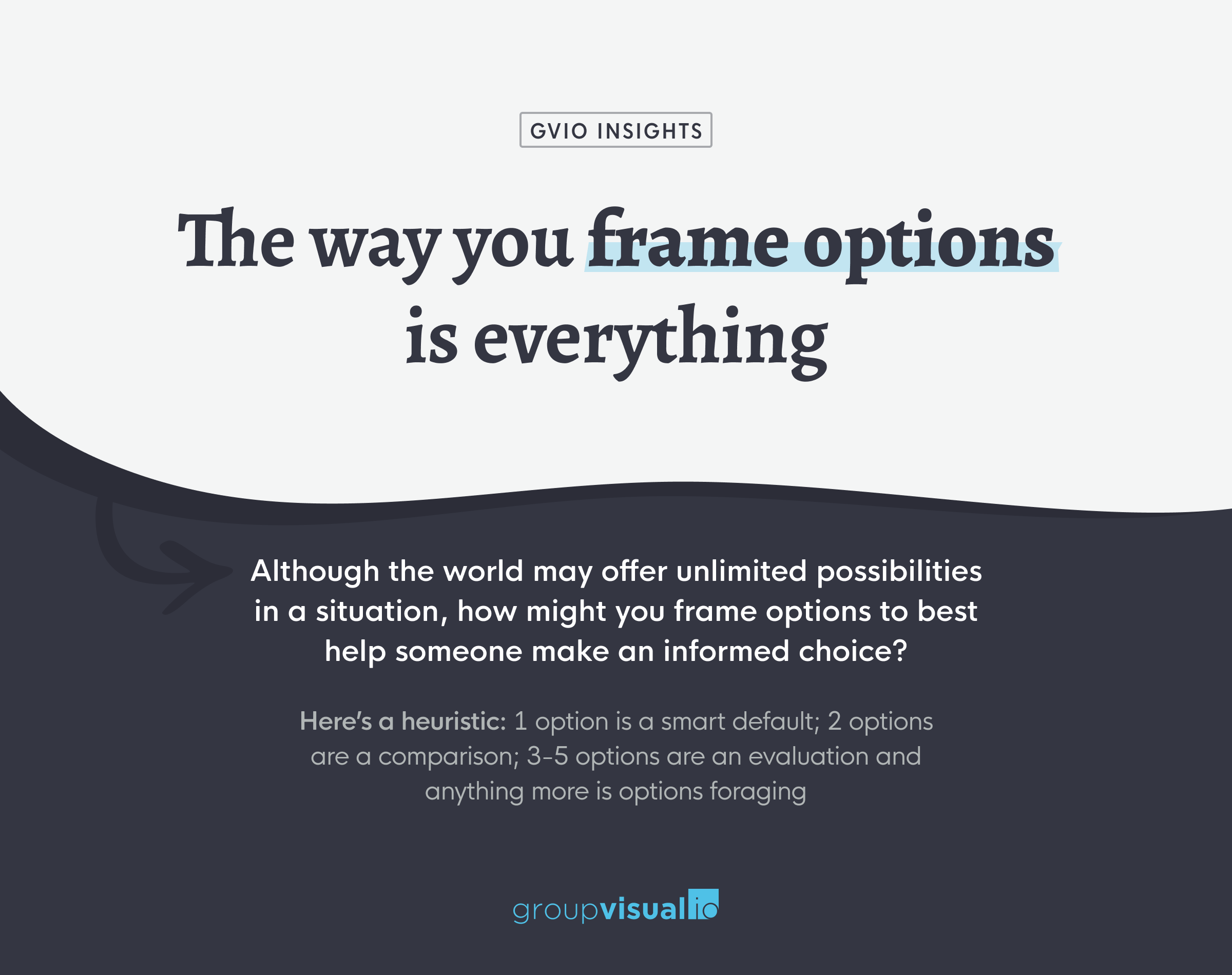26 Sep Choice overload: Help your users make informed choices
Last week, on our LinkedIn, we focused on the topic of choice overload, a challenge teams often face when building B2B and consumer digital products. In case you missed it, here are a few things to keep in mind:
The way you frame options is everything
We kicked off the topic with our weekly insight and prompt around how might you frame options to best help your users or customers make an informed choice. Keep in mind this heuristic:
- 1 option is a smart default
- 2 options are a comparison
- 3-5 options are an evaluation
- Anything more is options foraging

Choice Overload
Dr. Laurie Santos explored the impact of the quantity and quality of choices on user satisfaction. Does your product ask users to choose between too many choices? Do you offer them the right options?
Here’s what some of our colleagues had to say:
- The concept of Choice Overload suggests that users are less satisfied when asked to choose between many options. When designing digital products at GroupVisual.io, to mitigate this risk, we like to set a default option we know users are most likely to select or benefit from ultimately and show a couple of other options as a comparison. This made me think of the Asymmetric Dominance phenomenon, which Dan Ariely describes with humor in his 2008 TED Talk (if you don’t have time to watch the entire talk, consider watching this part). My takeaway: If users don’t have a strong understanding of what options are best for them and if they can be swayed easily by external factors, then designers must be intentional and thoughtful when selecting what options make it on the screen. —Sebastien Primout
- Having options feels good because you feel like you have control. But when the act of making a choice feels like such a huge task, it’s more draining than anything else. The pressure of making sure you picked the best one out of all of the options is what’s overwhelming. When it’s something simple, like, what’s for lunch? Making the choice is not that big of a deal. If you make the wrong one, okay, you can try again tomorrow. But when it involves something really important or expensive, it becomes even more overwhelming when there are tons of options. Think about buying a new car, or something smaller, like picking out the best stroller for your growing family. Picking a $50 stroller with basic safety features from a list of 5 options is different from picking one of more than 100 options, averaging around $400 each and having so many opinions and commentary on which is the best one, which features are a must-have, which looks best, etc. If you spend $500 on a stroller and something isn’t going well, you’ll think about the other ones you didn’t get and wonder if you made the right choice. —Lisette Gonzalez
The Jam Study
Sheena Iyengar and Mark Lepper challenge the common assumption that more is always better:
The paradox of choice
Barry Schwartz analyzes the negative impact of too much choice on customer happiness and satisfaction:
The art of choosing
Sheena Iyengar discusses how people’s cultural background affects how they approach the act of choosing and how they respond to a greater number of options:
Up Next: How we learn
This week we will be focusing on how people learn and how your product can help them do that. Stay tuned!
